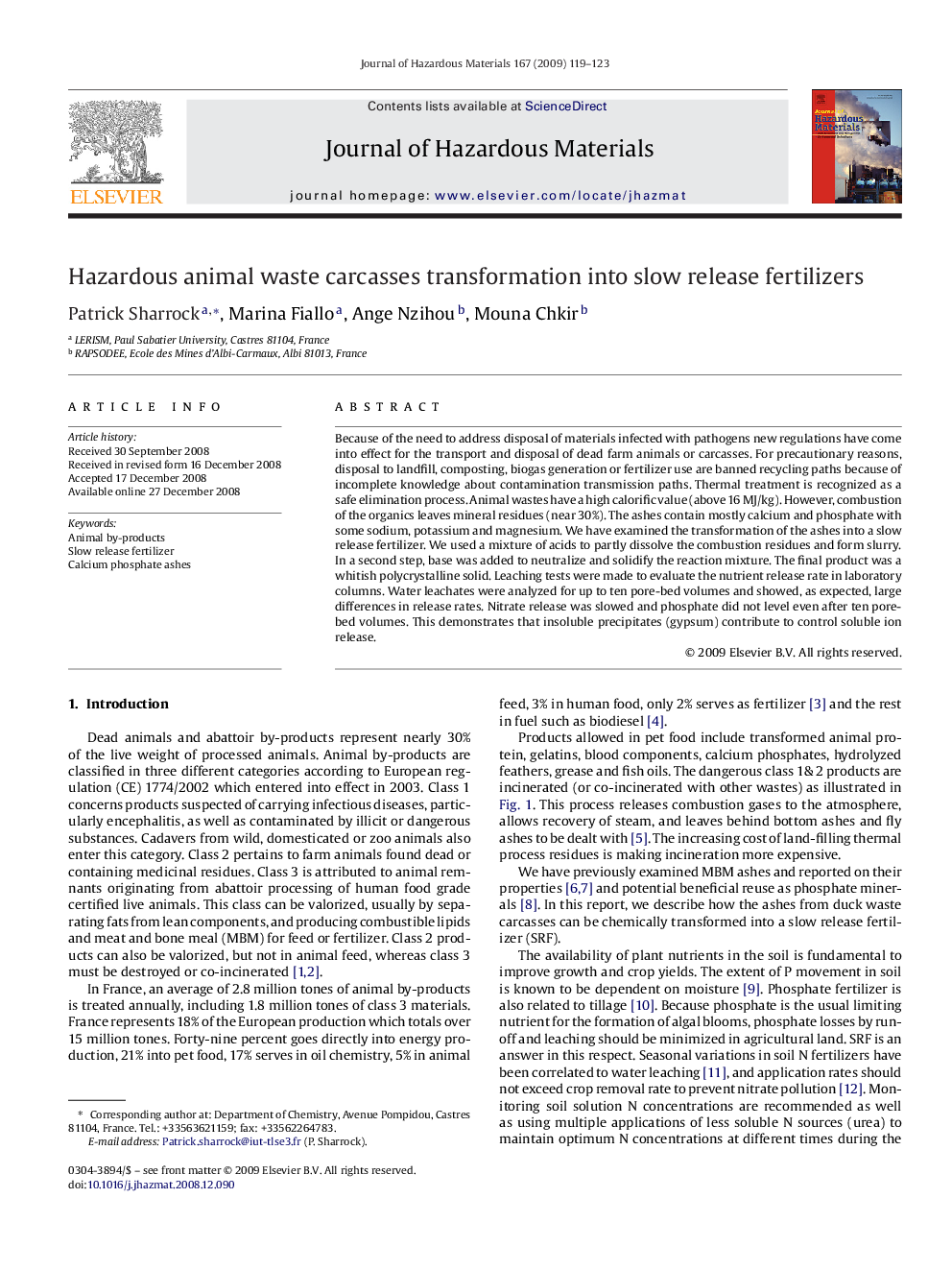| Article ID | Journal | Published Year | Pages | File Type |
|---|---|---|---|---|
| 581755 | Journal of Hazardous Materials | 2009 | 5 Pages |
Abstract
Because of the need to address disposal of materials infected with pathogens new regulations have come into effect for the transport and disposal of dead farm animals or carcasses. For precautionary reasons, disposal to landfill, composting, biogas generation or fertilizer use are banned recycling paths because of incomplete knowledge about contamination transmission paths. Thermal treatment is recognized as a safe elimination process. Animal wastes have a high calorific value (above 16Â MJ/kg). However, combustion of the organics leaves mineral residues (near 30%). The ashes contain mostly calcium and phosphate with some sodium, potassium and magnesium. We have examined the transformation of the ashes into a slow release fertilizer. We used a mixture of acids to partly dissolve the combustion residues and form slurry. In a second step, base was added to neutralize and solidify the reaction mixture. The final product was a whitish polycrystalline solid. Leaching tests were made to evaluate the nutrient release rate in laboratory columns. Water leachates were analyzed for up to ten pore-bed volumes and showed, as expected, large differences in release rates. Nitrate release was slowed and phosphate did not level even after ten pore-bed volumes. This demonstrates that insoluble precipitates (gypsum) contribute to control soluble ion release.
Related Topics
Physical Sciences and Engineering
Chemical Engineering
Chemical Health and Safety
Authors
Patrick Sharrock, Marina Fiallo, Ange Nzihou, Mouna Chkir,
